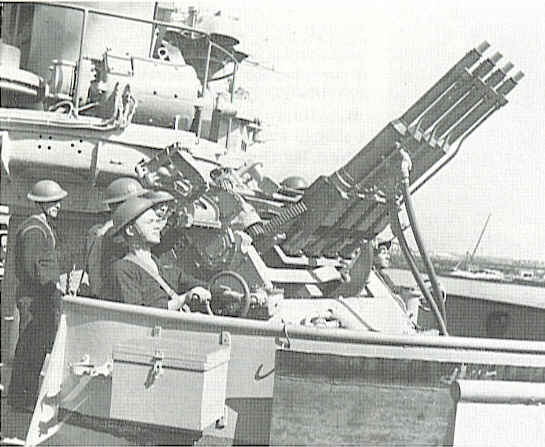
The development of this weapon began when an anti-aircraft Board convened by the Bureau of Ordnance (BuOrd ) in October 1928 decided that the 0.50" (12.7 mm) machine gun was too light a weapon for future air defense. As a result, BuOrd started investigating replacement weapons and decided to pursue two alternative designs. The first version, designated as the 1.1"/75 (28 mm) Mark 1, was a conventional recoil-spring operated weapon using clip-fed ammunition. Testing with converted 1-pdr. Mark 4 guns led to a prototype 1.1" (28 mm) single-barrel gun and tests with it were conducted between March and May 1931.
The second version, designated as the 1.1"/75 (28 mm) Mark 2, was based upon a design by Robert F. Hudson. This was a unique belt-fed (later converted to clip-fed), gas-operated, long-recoil weapon with the gas cylinder located beneath the gun barrel. Unlike most gas-operated weapons, this one did not use gas to cycle the bolt. Instead, gas tapped from the barrel was used to blow a weight forward to arrive at the front end of the cylinder and hit a spring buffer just as the projectile was leaving the muzzle, thus providing a counter-recoil effect. As an additional recoil reduction, the weight returning from the front of the gas cylinder compensated for the weight of the bolt moving forwards. This design achieved a very smooth recoil cycle, at the cost of considerable complexity and a modest rate of fire. A prototype was built and tested but its complex design was found to be unsatisfactory and further work was discontinued sometime around 1931.
BuOrd continued with the Mark 1 design and a firing rate of 140 rounds per minute was achieved in 1933. At this point, BuOrd decided to use these weapons in a quadruple mounting as the combined rate of fire of the four guns approached that of a single 0.50" (12.7 mm) MG at roughly 500 rounds per minute. It was felt that this rate of fire would result in a disabling amount of hits on even a fast-diving plane. The projectiles for the 1.1" (28 mm) differed substantially from the 0.50" (12.7 mm) solid bullets by having an explosive filler which was set off by a "super-quick" fuze. A 1934 report to the Navy General Board concluded that a single 1.1" (28 mm) hit on any part of an aircraft would probably result in a forced landing.
Testing with the prototype quad mount in 1935 found many problems, the most serious being that the mount was not rigid enough and vibrated badly as a result. Improvements and modifications were made and the first production units went aboard ship in 1937. Unfortunately, during early service use the weapon was found to be unreliable, prone to jamming and ineffective as an AA weapon. Never popular, they were rapidly replaced by the superior 20 mm Oerlikon and 40 mm Bofors AA weapons during World War II. By January 1945 the 1.1" (28 mm) guns were in active service only on a few smaller ships. All surviving guns and mountings were ordered scrapped in 1945 and as a result very few survive today. In retrospect, it would appear that these defects were little more than teething problems and that the basic design of the gun was sound. However, this weapon still lacked the range and larger bursting charge of the 40 mm Bofors and replacement rather than correction was certainly the better choice.
Construction of the production weapon was a monobloc barrel with chromium plating both internally and externally. Mod 1 had a threaded muzzle to accept a flash suppressor. Actual bore length was 74.55 calibers.
The quad mountings were used with the Mark 44 Director, which was the USN's first off-mount director for automatic anti-aircraft weapons. This was a simple "dummy gun" type director and was manually trained and elevated. The Mark 44 contained optics and a spotting glass, but did not have any lead angle computing elements such as were found in later directors for automatic weapons such as the Mark 51. The Mark 44 simply removed the operator away from the noise and smoke of the weapon, providing a clearer line of sight to the target. However, the Mark 44 did provide a basis for further development for the remote control of automatic weapons and influenced the design of the later and much more successful Mark 51 and other small AA directors.
A Note on Sources: Respected publications (e.g., Ian Hogg in "Anti-Aircraft Artillery," Cordwood Press, 2002; and "Machine Guns: 14th Century to Present," Krause Publications, 2002; plus works drawing from them, "The Chicago Piano," by Konrad F Schreier Jr, Naval History, Jul/Aug 1994, United States Naval Institute; and "USN 1.1-in AA gun," by Richard Worth, Warship International, Vol. No. 3, 2003) state that the gun as used by the US Navy during World War II was designed by a Mr. R.F. Hudson, who was a private inventor, having built and patented reduced-recoil machine gun designs throughout the 1920s. These accounts and patents describe Hudson's 1.1" (28 mm) gun in great detail. The problem with these accounts is that while they accurately describe the ingenious Hudson gun, it does not appear that this was the design actually chosen for production. The alternative account (e.g. in Norman Friedman's "Naval Anti-Aircraft Guns and Gunnery," US Naval Institute Press, 2014), which is taken from BuOrd documents now in the possession of the National Archives and Records Administration (NARA), is that BuOrd had started working on their own gun design starting in December 1928 which utilized a conventional recoil-spring operating system. At about the same time, BuOrd was also investigating an alternative weapon offered by Automatic Guns Inc. and designed by Mr. Hudson. The Hudson gun (Mark 2) was found to be unsatisfactory and the BuOrd design (Mark 1) was chosen for further development, eventually being manufactured at the Naval Gun Factory in Washington and then used on US warships during the early years of World War II. This account is supported by the descriptions given in BuOrd Ordnance Pamphlet No. 127 "United States Naval Guns: Their Marks and Modifications" of 1942. In this document, the 1.1"/75 Mark 1 is described as a "recoil operated" weapon and there is no mention of any form of gas operation. OP 127 also lists the Mark 2 (Experimental) 1.1" gun which is described as "gas operated" and mentions how a hole was drilled in the gun barrel 18" (46 cm) from the breech face in order to allow the gas operation. The location of this hole would appear to support the Mark 2 as being the Hudson design (see Patent sketch below) and the fact that this Mark was still labeled as "Experimental" in 1942 would further support the Friedman account.
| Designation | 1.1"/75 (28 mm) Mark 1 |
|---|---|
| Ship Class Used On | Destroyers and larger ships 1930s - 1940s |
| Date Of Design | 1929 |
| Date In Service 1 | 1937 |
| Gun Weight | 556 lbs. (252 kg) (without breech) |
| Gun Length oa | 119.6 in (3.037 m) |
| Bore Length | 82.0 in (2.083 m) |
| Rifling Length | N/A |
| Grooves | N/A 2 |
| Lands | N/A |
| Twist | RH 1 in 30 |
| Chamber Volume | 10.5 in3 (0.172 dm3) |
| Rate Of Fire | Cyclic: 150 rounds per minute
Practical: About 100 rounds per minute |
| Type | Fixed |
|---|---|
| Weight of Complete Round | 1.9 lbs. (0.86 kg) |
| Projectile Types and Weights 1a 3a 4a | HE-T Mark 1 Mods 0 to 28 - 0.917 lbs. (0.416 kg)
HE-T/SD Mark 1 - 0.917 lbs. (0.416 kg) HE-T/SD Mark 2 Mods 0 and 1 - 0.917 lbs. (0.416 kg) |
| Bursting Charge | HE-T - 0.037 lbs. (0.017 kg) Explosive D
HE-T/SD - 0.034 lbs. (0.015 kg) Explosive D |
| Projectile Length | HE-T Mark 1 - 5.8 in (14.7 cm)
HE-T/SD Mark 1 - 5.8 in (14.7 cm) HE-T/SD Mark 2 - 5.7 in (14.5 cm) |
| Cartridge Case Type, Size and Empty Weight | Mark 1 - Brass, 28 x 199 mm, 0.688 lbs. (0.31 kg) |
| Propellant Charge | 0.265 lbs. (0.120 kg)
Cartridge - 0.883 lbs. (0.444 kg) |
| Muzzle Velocity | New Gun: 2,700 fps (823 mps)
Average Gun: 2,600 fps (792 mps) |
| Working Pressure | 16.0 tons/in2 (2,520 kg/cm2) |
| Approximate Barrel Life | N/A |
| Ammunition stowage per gun 5a | N/A |
- ^The many Mods of HE-T Mark 1 were primarily bookkeeping designations used to indicate the manufacturer. Mark 1 rounds as built did not have a self-destruct feature. The HE-T/SD Mark 1 rounds were HE-T Mark 1 projectile bodies modified by drilling a hole through the wall separating the tracer and the burster and then installing a new tracer that ignited the burster when the tracer element burned out. Mark 2 rounds were similar to the Mark S.D. 1 and were self-destruct types as originally manufactured as shown in the sketch below.
The actual USN designations were as follows:
HE-T Mark 1: 1.1-Inch AA Mk 1
HE-T/SD Mark 1: 1.1-Inch AA Mk S.D. 1
HE-T/SD Mark 2 Mod 0: 1.1-Inch AA Mk 2 Mod 0
HE-T/SD Mark 2 Mod 1: 1.1-Inch AA Mk 2 Mod 1 - These projectiles were originally fitted with super-sensitive Point Detonation (contact) fuzes Mark 12 Mod 0 and Mod 1 which had a short delay. It was claimed in a November 1934 report to the General Board that this fuze was so sensitive that it would "function on impact with a single thickness of airplane wing fabric and which has such a short delay that the projectile will explode in the wing section. The damaging effect of this projectile is remarkable. A [single] hit on any part of the plane will probably cause a forced landing." However, this fuze was not bore-safe and war-time bore prematures were not uncommon with this ammunition. The too-sensitive Mark 12 Mod 0 and Mod 1 fuzes were eventually replaced by the Mark 12 Mods 2 and 3 which reduced sensitivity by placing a washer above the firing pin with the firing pin now crimped above the washer. On impact, both the crimp and the washer had to be broken in order for the pin to move and strike the igniter. These mods would have greatly reduced bore prematures.
- ^Tracer burnt for about 3,000 yards (2,750 m).
- ^Ammunition was loaded into eight-round clips, and each gun had positions for two clips. The gun fed from one clip at a time, allowing for empty clip changeouts while the gun kept firing from the other clip. A loaded eight-round clip weighed about 34 lbs. (15.4 kg).
- Bourrelet diameter was 1.085 inches (2.76 cm).
| Type | Color |
|---|---|
| HE-T | Light Gray with White Band |
| HE-T/SD | Dark Green with White Band |
| BL&P | Red all over |
| BL&T | Red all over with White Band |
- These projectiles were originally issued unpainted except for two dots below the fuze, which were as follows:
- Yellow Dot indicating that the burster was Explosive D
- Red Dot indicating that a Tracer was used - A color marking system was later proposed which may have been used on ammunition issued late in the war. This marking system is shown in the above table.
| Elevation | Range | Angle of Fall | Time of Flight | Striking Velocity | Maximum Ordinate |
|---|---|---|---|---|---|
| 0.52 degrees | 1,000 yards (914 m) | 0.67 degrees | 1.37 seconds | 1,818 fps (554 mps) | 8 feet (2.4 m) |
| 0.90 degrees | 1,500 yards (1,372 m) | 1.35 degrees | 2.32 seconds | 1,470 fps (488 mps) | 22 feet (7 m) |
| 1.45 degrees | 2,000 yards (1,839 m) | 2.42 degrees | 3.47 seconds | 1,177 fps (359 mps) | 51 feet (16 m) |
| 5.52 degrees | 4,000 yards (3,658 m) | 11.37 degrees | 9.97 seconds | 775 fps (236 mps) | 442 feet (135 m) |
| 14.60 degrees | 6,000 yards (5,486 m) | 34.85 degrees | 21.10 seconds | 491 fps (150 mps) | 1,920 feet (585 m) |
| 40.88 degrees | 7,400 yards (6,767 m) | 78.45 degrees | 47.70 seconds | 434 fps (132 mps) | 8,600 feet (2,621 m) |
| 90.00 degrees | N/A | N/A | N/A | N/A | 19,000 feet (5,791 m) |
- ^Values for HE Shell from BuOrd OP 1188 page 3 and "Naval Weapons of World War Two" page 151. The muzzle velocity shown is the expected average MV over the life of the gun barrel.
- ^Ranges in the table above are simply the ballistic characteristics. Effective range during World War II against aircraft for manually aimed weapons rarely exceeded 1,000 yards (910 m).
| Designation | Quadruple Mounts 1d Mark 1 2d Mark 2 Mod 1, Mark Mods 2 - 6 3d |
|---|---|
| Weight | Mark 1: N/A
Mark 2 Mod 2: 10,500 lbs. (4,763 kg) Mark 2 Mods 3 - 6 weighed between 4.7 and 6.25 tons (4.78 - 6.35 mt) |
| Elevation | -15 / +110 degrees |
| Elevation Rate | 24 degrees / second |
| Train | 360 degrees |
| Train Rate | 30 degrees / second |
| Gun recoil | 3.25 in (82.55 mm) |
| Side-to-side slewing | - 30 / +30 degrees |
- ^In 1941 - 42, the normal allocation was four mountings for larger ships and one or two for destroyers. However, USS Lexington (CV-2) carried a total of 12 mounts when lost in 1942.
- ^The Mark 1 had the side-to-side slewing feature. It was determined that these mountings suffered from too much vibration, so they were modified by adding large steel stiffening plates between the carriage and the base of the mounting. The later Mark 2 mounts incorporated this change and deleted the side-to-side slewing feature.
- ^RPC was fitted to all Mark 2 mountings during the war.

Note the spokeless trainer's wheel, the sailor holding a spare clip and that the mounting holds eight ammunition clips - two per gun. One of the problems with the design of this quad mount can be easily seen in this photograph - the need for the first loaders to work in close proximity to one another with little room for error. Although I have nothing to support this, I strongly suspect that the USN's design for the quad Bofors mounting, with its widely spaced pair of twin guns to allow ample working space for the four first loaders, was a direct consequence of the experience gained with the 1.1" (28 mm) quad mount.
The guns in the background are 20 mm Oerlikons.
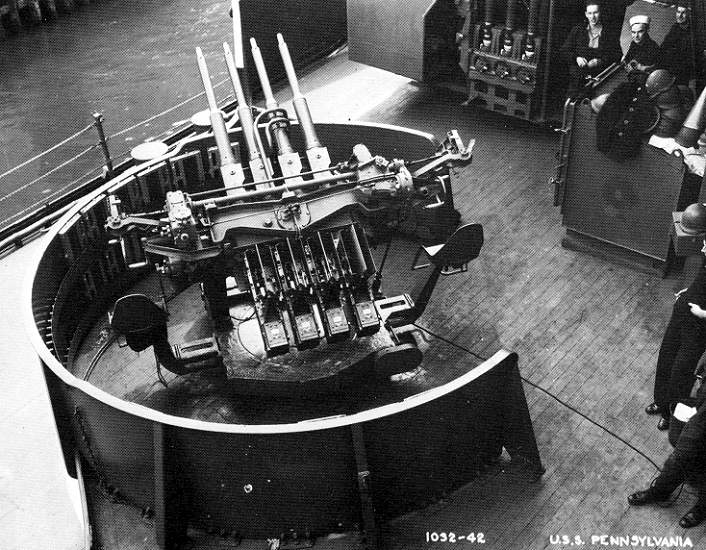
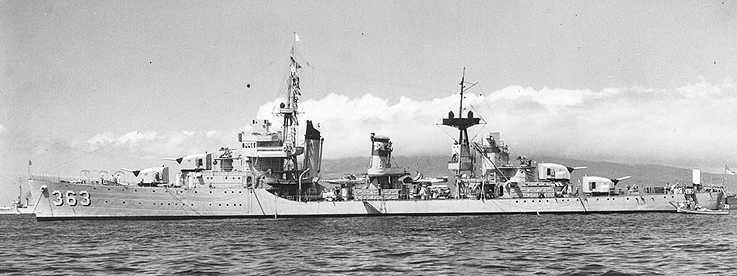
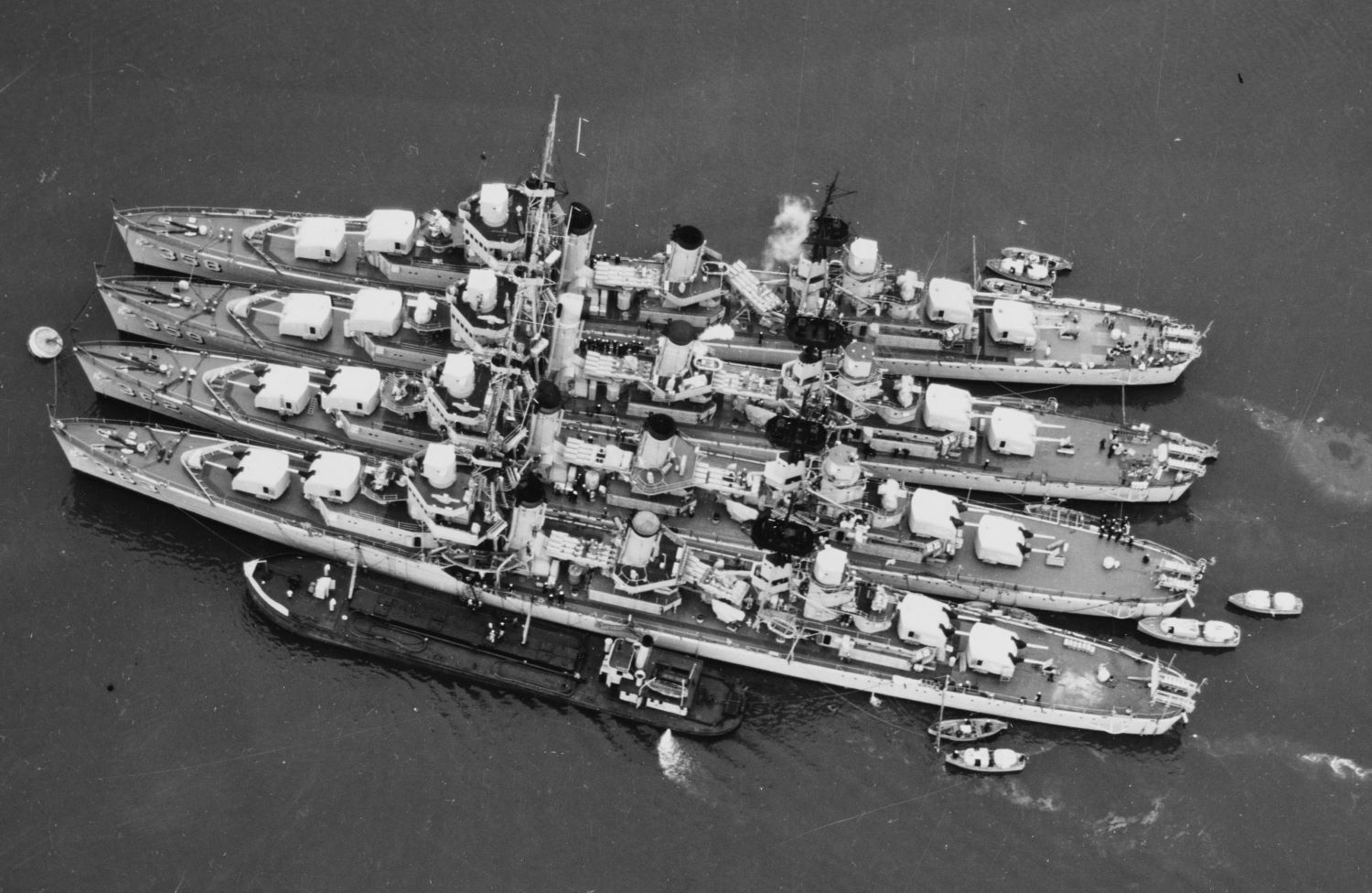
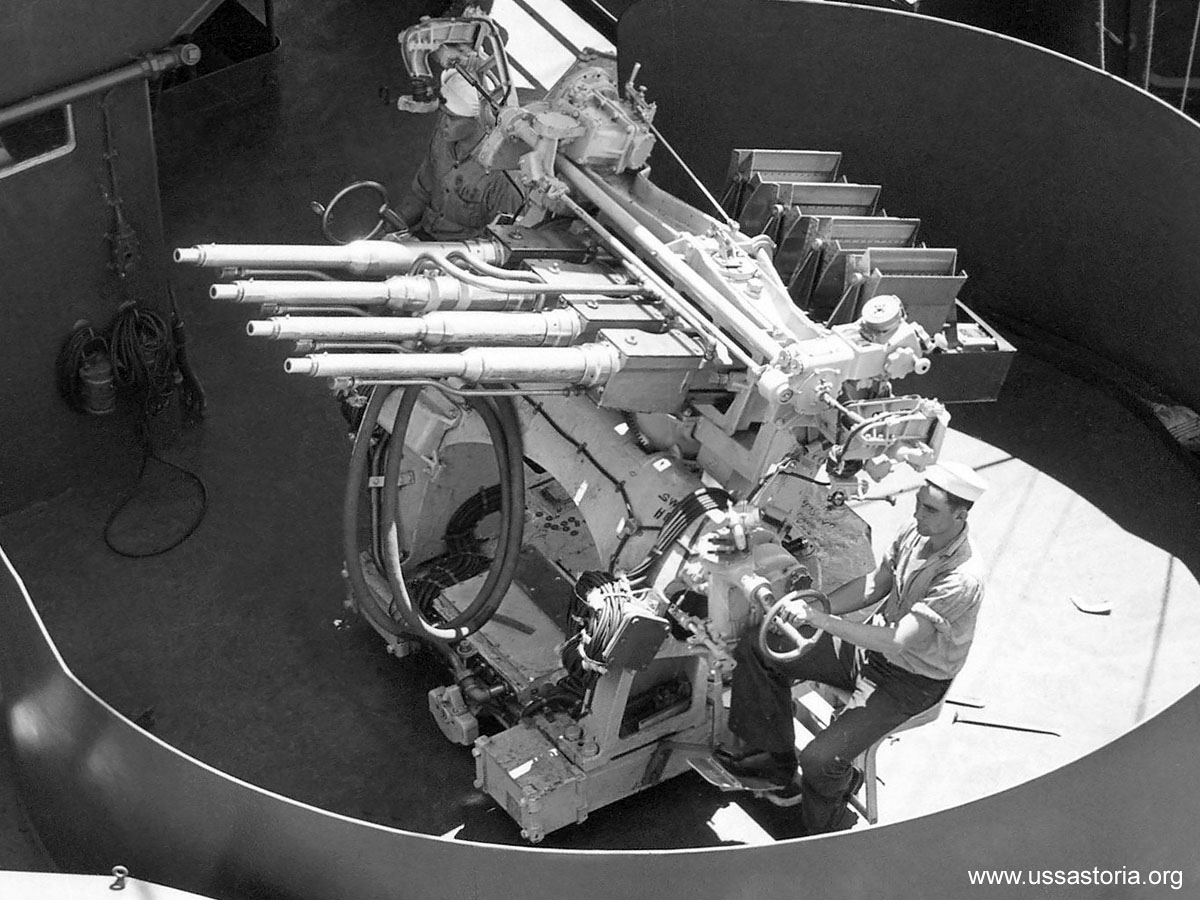
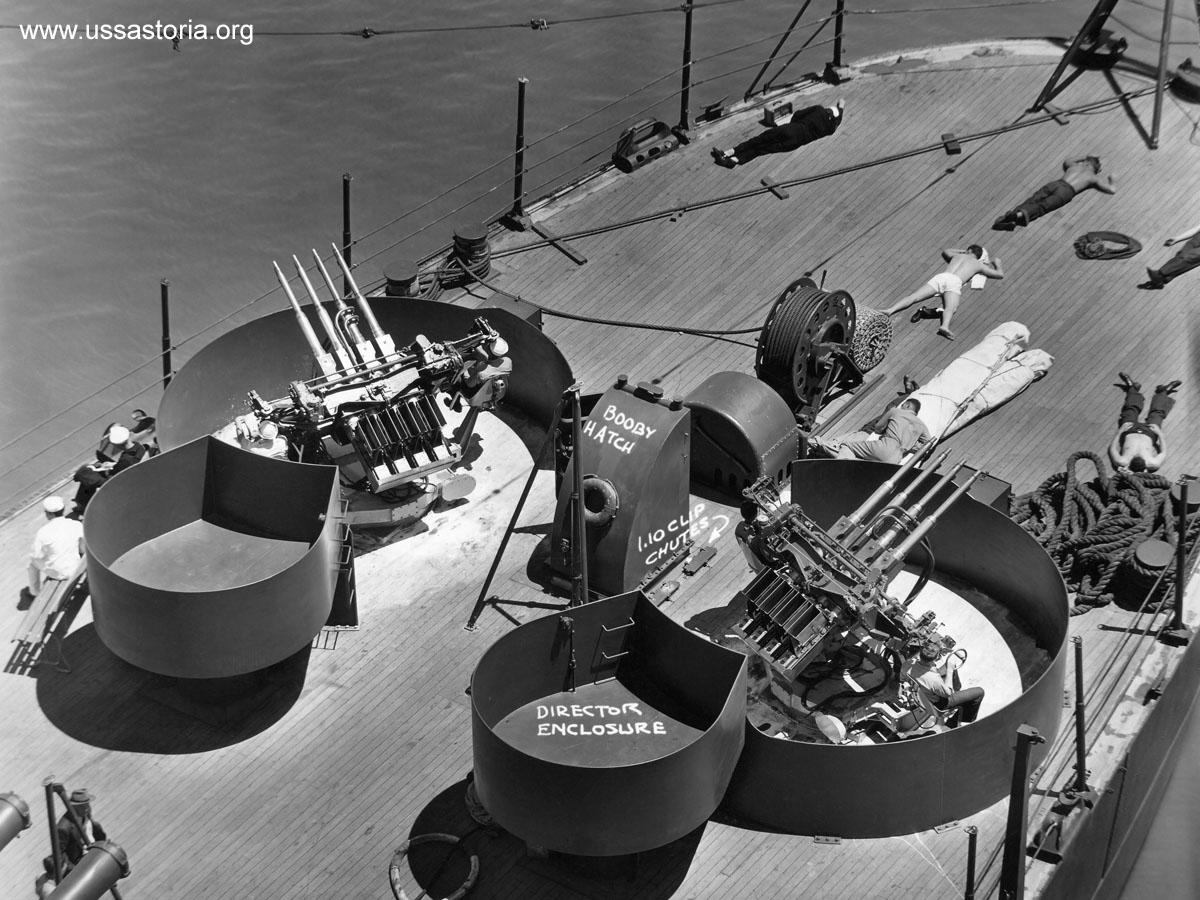
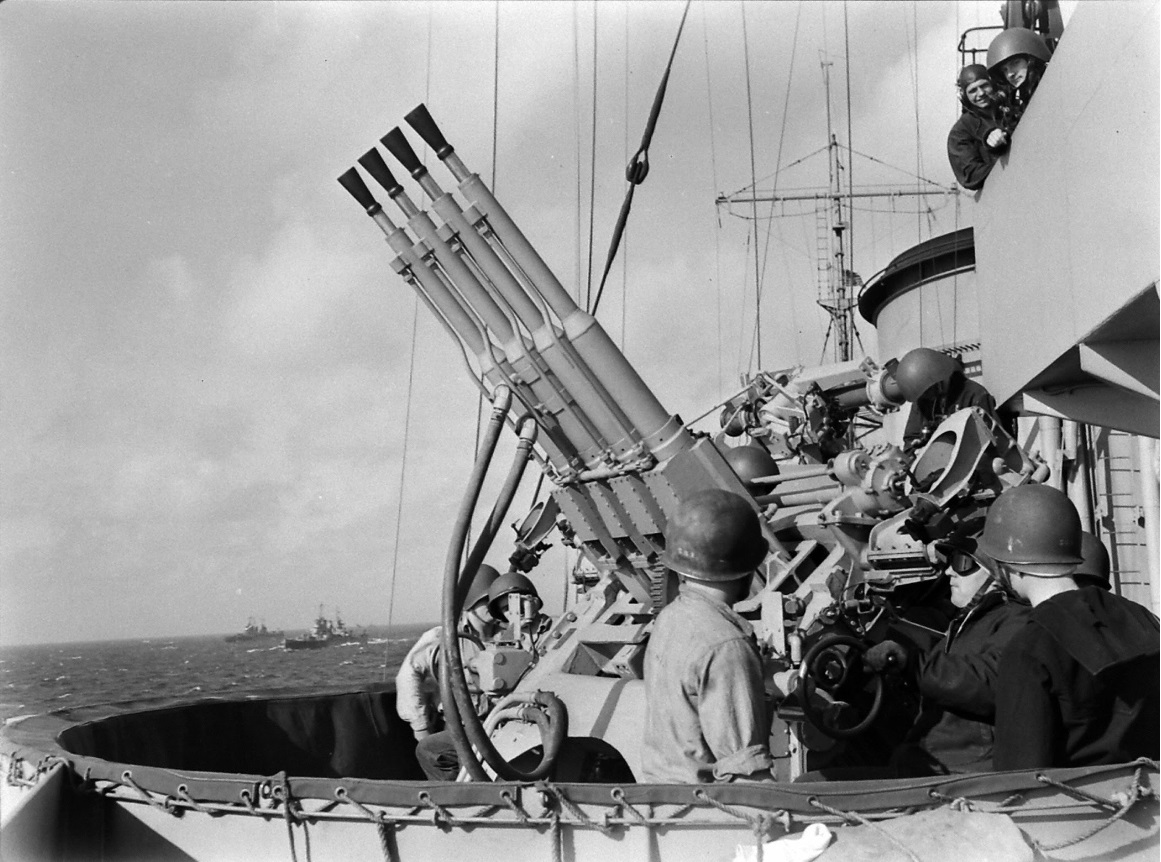
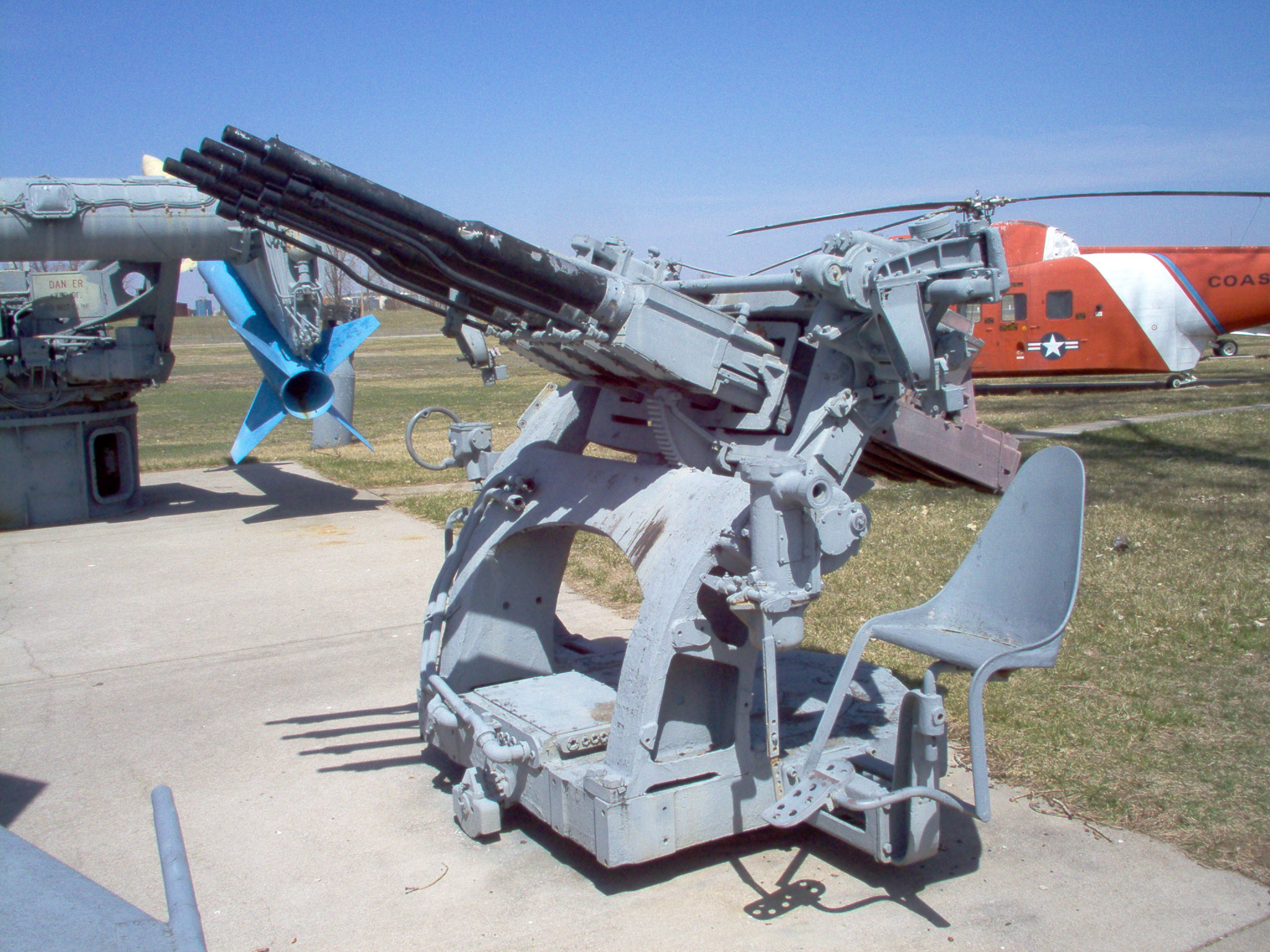
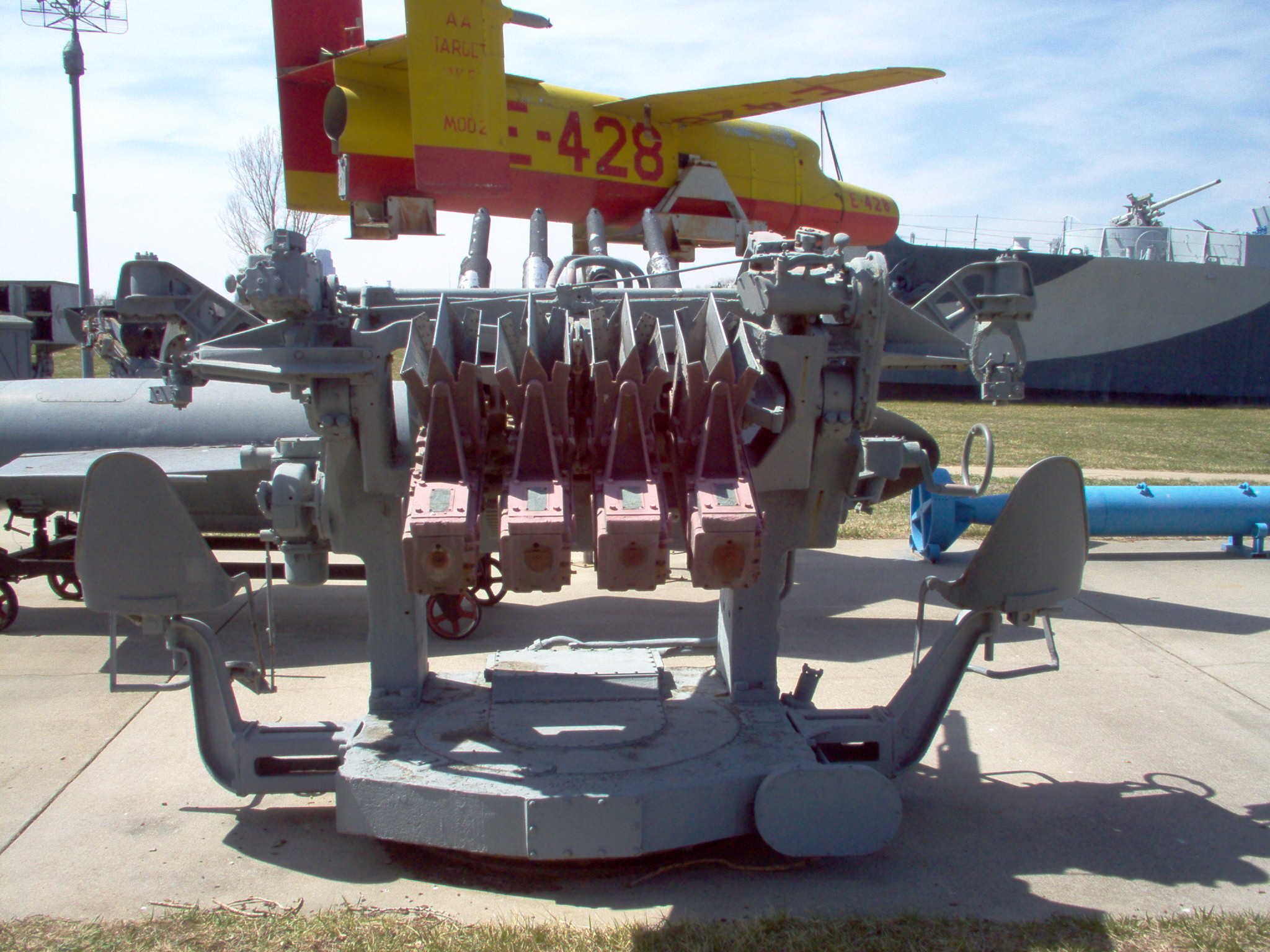



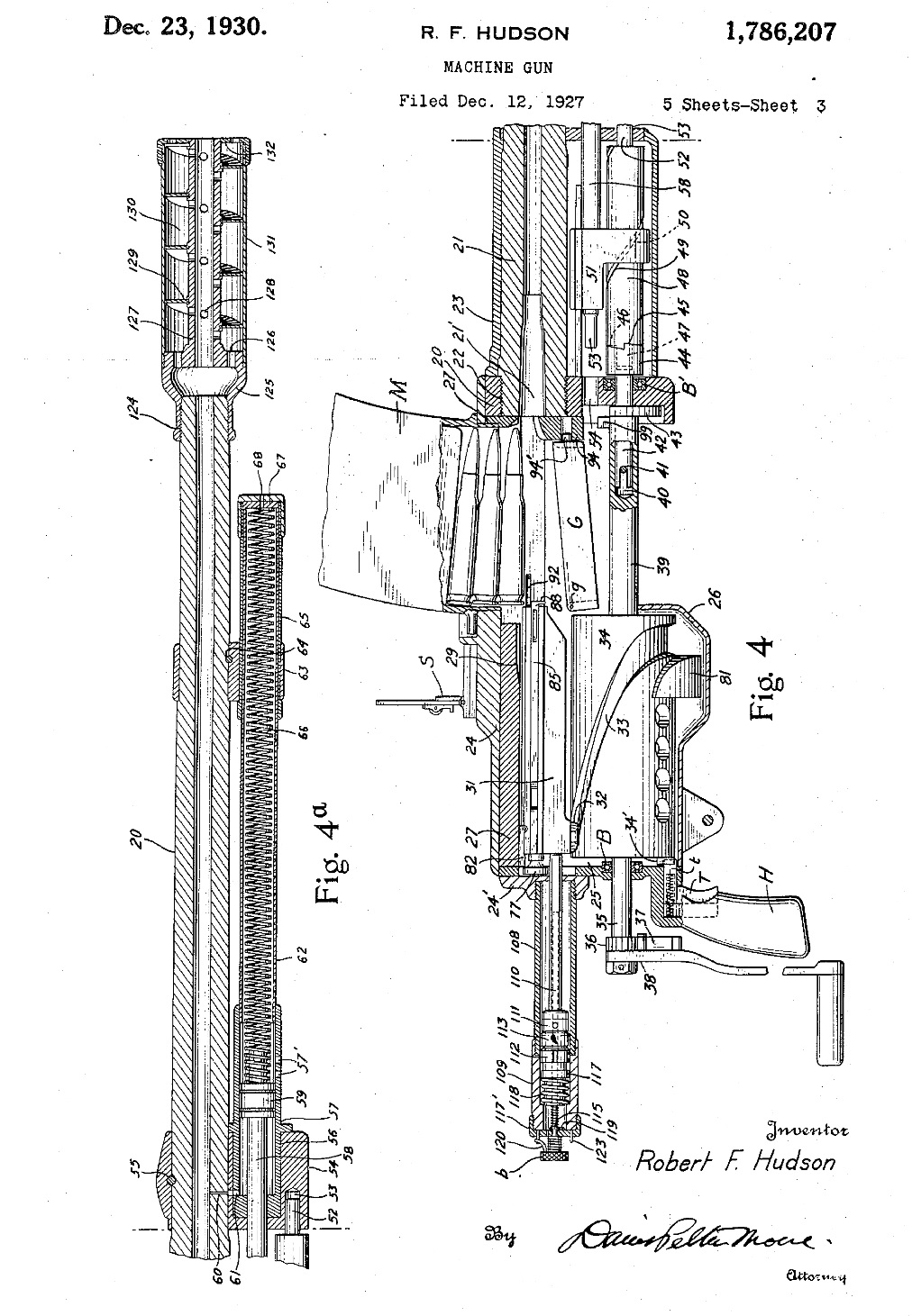
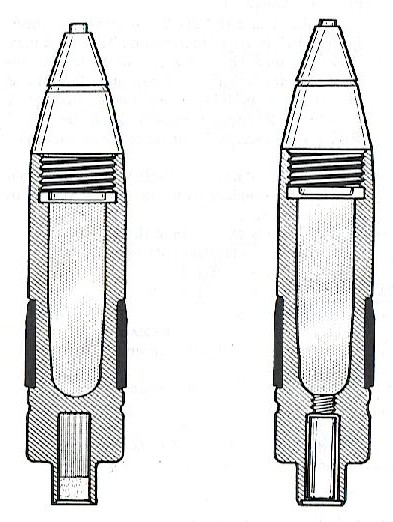
"Naval Weapons of World War Two" by John Campbell
"US Naval Weapons" and "Naval Anti-Aircraft Guns and Gunnery" both by Norman Friedman
"Battleships: United States Battleships, 1935-1992" by W.H. Garzke, Jr. and R.O. Dulin, Jr.
"Anti-Aircraft Artillery" and "Machine Guns: 14th Century to Present" both by Ian Hogg
"Rapid Fire: The Development of Automatic Cannon, Heavy Machine Guns and their Ammunition for Armies, Navies and Air Forces" by Anthony G. Williams
---
"The Chicago Piano" article by Konrad F Schreier Jr. in Naval History Jul/Aug 1994, Vol. 8, Issue 4, pages 44-47
"USN 1.1-in AA Gun" letter by Richard Worth in Warship International No. 3, 2002, page 205-207
---
"US Navy Projectiles and Fuzes" published by U.S.N.B.D.
"Ammunition: Instructions for the Naval Service: Ordnance Pamphlet 4 - May 1943" by Bureau of Ordnance (BuOrd), Department of the Navy
"United States Naval Guns: Their Marks and Modifications - Ordnance Pamphlet No. 127, 3rd Revision, April 1942" by Bureau of Ordnance (BuOrd), Department of the Navy
"Abridged Range Tables for U.S. Naval Guns: Ordnance Pamphlet No. 1188, 13 June 1944" by Bureau of Ordnance (BuOrd), Department of the Navy
"U.S. Explosive Ordnance - Ordnance Pamphlet No. 1664 - May 1947" by Bureau of Ordnance (BuOrd), Department of the Navy
US Patent #1,786,207 issued to Robert F Hudson on 23 December 1930
---
Gene Slover's Navy Pages
---
Special help from Anthony G. Williams, Richard Worth and Peter DeForest
16 May 2008 - Benchmark
14 January 2011 - Added data reference
26 July 2016 - Converted to HTML 5 format
12 May 2018 - Reorganized notes and added information about gas operated recoil design
05 May 2020 - Added photographs by Eliot Elisofon and Carl Mydans
15 June 2020 - Added quad 1.1" sketch
10 July 2020 - Updated history of Mark 1 and Mark 2 designs, projectile and fuze notes, added source note and added Experimental Mark 2 photograph and patent sketch
13 December 2020 - Added photographs and details about surviving mounting in Omaha, Nebraska
27 June 2021 - Reorganized description section
11 August 2023 - Revised range table
25 February 2025 - Added photographs of USS Balch (DD-363) and destroyer nest and minor changes for clarity
